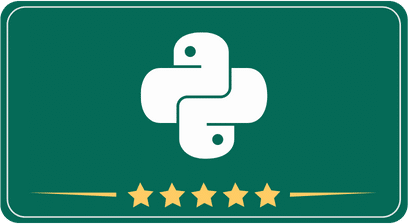Scraping Google search results can provide valuable information for businesses, researchers, and developers by gathering specific pieces of data from SERPs. After writing a complete overview of how to scrape google search, we decided to dig deeper and write a practical guide on how to scrape google search results with Python.
In this tutorial, we will explore the essential libraries, such as BeautifulSoup and requests, and demonstrate how to craft effective scripts to retrieve and parse Google search results with Python.
Table of Contents
- TL; DR
- Why Choose Python To Scrape Google Search Results?
- 1. Automated Keyword Research With Python
- 2. Competitor Analysis With Python
- 3. SEO Audit Automation With Python
- 4. Content Gap Analysis With Python
- 5. Backlink Analysis With Python
- 6. On-Page Optimization With Python
- 7. Predictive Analysis With Python
- Understanding Python’s Essential Libraries
- Installing Python and Essential Libraries
- How To Build A Python Google Search Scraper? Step-by-Step
- Managing Pagination When You Scrape Search Results With Python
- Threading, Proxies And Random Headers to Avoid Google Blocks
- Python Scripts For Dealing With Google CAPTCHAs
- How To Export, Store, and Process Scraped Data?
- Advanced Python Scraping For Google Search Results
- How To Scrape Data From Google Maps Using Python?
- How To Scrape Google Reviews Using Python?
TL; DR
- Python is favored for scraping Google search results due to its ease of use, robust libraries like BeautifulSoup, and efficient data handling capabilities, supported by a strong community.
- Practical Python script examples are provided for SEO tasks including keyword research, competitor analysis, SEO audits, content gap analysis, backlink analysis, on-page optimization, and predictive analysis.
- Essential Python libraries for web scraping are Requests, BeautifulSoup, Pandas, and Json, each serving specific functions like sending HTTP requests, parsing HTML, and handling data.
- This is a detailed tutorial that explains the creation of a Python scraper for Google search, covering environment setup, code structure, result extraction, error handling, and pagination management.
- Advanced scraping topics cover dealing with Google CAPTCHAs, data export and processing, and using techniques like threading and proxies to avoid blocks, as well as specific methods for scraping Google News, Maps, and Reviews.
Why Choose Python To Scrape Google Search Results?
There are numerous reasons why Python stands as the top choice for scraping Google search results such as:
- Simplicity and Ease of Use that makes you focus more on the data extraction rather than struggling with the language itself.
- Powerful Libraries such as BeautifulSoup, Scrapy, and Selenium provide robust functionality to not only access web page data but also to parse and extract useful bits with ease.
- Flexible handling of different data formats such as JSON, HTML, or XML and excellent ability to interact with APIs and large-scale scraping tasks efficiently.
- Python’s strong and active community is a significant asset ensuring it remains at the forefront of web scraping technologies.
With Python, you can automate and streamline many SEO tasks. Below are Python script examples for 7 main SEO tasks. These scripts serve as basic templates and might require customization based on specific requirements.
1. Automated Keyword Research With Python
Python scripts can scrape search engine results for specific keywords and analyze their frequency and relevance. This automation speeds up the keyword research process, allowing you to quickly identify high-opportunity keywords.
Script Example:
from serpapi import GoogleSearch
params = {
“engine”: “google”,
“q”: “digital marketing”,
“api_key”: “Your_API_Key”
}search = GoogleSearch(params)
results = search.get_dict()
for result in results[‘organic_results’]:
print(result[‘title’], result[‘link’])** Note: You’ll need an API key from a service like SerpAPI.

2. Competitor Analysis With Python
Python can extract and compare data from competitor websites. This includes tracking keyword rankings, analyzing backlinks, and monitoring content strategies, giving you insights into their SEO tactics.
Script Example:
import requests
from bs4 import BeautifulSoupurl = “http://competitorwebsite .com”
reqs = requests.get(url)
soup = BeautifulSoup(reqs.text, ‘html.parser’)for link in soup.find_all(‘a’):
print(link.get(‘href’))** Note: This script fetches URLs from a competitor’s site.
3. SEO Audit Automation With Python
Python can automate the process of conducting SEO audits. It can check website health, identify broken links, analyze meta tags, and assess site speed, providing a comprehensive audit report. This is highly valuable for SEO agency operations.
Script Example:
from urllib.request import urlopen
from bs4 import BeautifulSoupurl = “http://yourwebsite.com”
page = urlopen(url)
html = page.read().decode(“utf-8”)
soup = BeautifulSoup(html, “html.parser”)print(soup.title)
print(soup.find_all(‘meta’))** Note: This script checks basic SEO elements on a webpage.
4. Content Gap Analysis With Python
Using Python, you can automate the process of identifying content gaps. This involves comparing your content with that of competitors and highlighting areas where you can improve or create new content.
This is a more complex task and usually requires manual analysis supported by data extracted via Python scripts, like scraping competitor content.
Example Script: Extract headings from a webpage:
import requests
from bs4 import BeautifulSoupurl = “http://competitorwebsite .com”
page = requests.get(url)
soup = BeautifulSoup(page.content, “html.parser”)for heading in soup.find_all([‘h1’, ‘h2’, ‘h3’]):
print(heading.text.strip())
5. Backlink Analysis With Python
Python scripts can crawl the web for backlinks to your site, assess their quality, and identify potentially harmful links. This is crucial for maintaining a healthy backlink profile.
For this task You will need to use an SEO tool API like Ahrefs or SEMrush for backlink data, as Python alone can’t efficiently gather this data.
Script Example using a generic API:
import requests
url = “https://api.seotool .com/backlinks?domain=yourwebsite .com”
response = requests.get(url)
backlinks = response.json()for link in backlinks[‘backlinks’]:
print(link[‘url’], link[‘score’])
6. On-Page Optimization With Python
Python can automate the analysis of on-page elements like headers, title tags, and alt texts, ensuring they are optimized for search engines.
Script Example:
from bs4 import BeautifulSoup
import requestsurl = “http://yourwebsite .com”
response = requests.get(url)
soup = BeautifulSoup(response.text, ‘html.parser’)title = soup.find(‘title’).get_text()
meta_description = soup.find(‘meta’, attrs={‘name’: ‘description’})[‘content’]print(“Title:”, title)
print(“Meta Description:”, meta_description)
7. Predictive Analysis With Python
Python can analyze historical SEO data to predict future trends. This helps in strategizing future SEO efforts more effectively.
Script Example:
import pandas as pd
from sklearn.linear_model import LinearRegression
import numpy as np# Example: Predict future traffic based on historical data
# Replace ‘data.csv’ with your SEO data file
data = pd.read_csv(‘data.csv’)
model = LinearRegression().fit(data[[‘Time’]], data[‘Traffic’])# Predict traffic for future time period
future_time = np.array([[12]]) # Replace with the time period you want to predict for
predicted_traffic = model.predict(future_time)
print(“Predicted Traffic:”, predicted_traffic[0])
Each script you have seen here is a basic template. Real-world applications may require more complex logic and error handling.

Understanding Python’s Essential Libraries
Python’s versatility in handling various tasks, including SEO, stems from its extensive range of libraries. These libraries simplify complex tasks and enhance Python’s functionality. key Python libraries you can use to scrape google search include:
1. Requests
- Purpose: Sends HTTP requests to websites.
- Use Case: Accessing the Google search results page.
- Simple Explanation: It’s like using a browser to open a webpage, but done through a Python script.
- Requests is widely loved for its simplicity and performance, and it’s fundamental in scraping because you’ll be making HTTP requests frequently.
2. BeautifulSoup
- Purpose: Parses and extracts data from HTML.
- Use Case: Pulling out specific data, like titles and links, from Google search results.
- Simple Explanation: It helps in sorting through the clutter of a webpage to find the exact information you need.
- Web pages can be complex and inconsistent, and BeautifulSoup saves you the trouble of digging through messily organized or obfuscated source code.
3. Pandas
- Purpose: Pandas is a widely-used Python library for data manipulation and analysis.
- Use Case: Organizing the scraped data into a readable and usable format. It provides data structures and functions that make it easy to manipulate tabular data, similar to how you would in a spreadsheet.
- Panda’s main data structure is the DataFrame, which allows you to store and manipulate data in rows and columns, with various functionalities for data cleaning, filtering, grouping, and summarizing.
- Simple Explanation: Think of it as a tool for creating and managing spreadsheets within Python.
4. Json (For SerpApi):
- Purpose: While “Json” itself is not a library, in Python, the json module is a standard library used for working with JSON data.
- You can convert JSON data to Python data structures and vice versa.
- Use Case: This is particularly useful when dealing with data from web APIs, including SerpApi, which often return data in JSON format.
Installing Python and Essential Libraries
To install Python, you can download it directly from the official website. As for the libraries, Python’s package manager, pip, makes the process straightforward which is automatically installed with Python. Also, you need an IDE ( Integrated Development Environment ) to run Python scripts. A good free IDE is VS Code from Microsoft which is free to download.
IDE (Integrated Development Environment), is a software application that provides comprehensive facilities to computer programmers for software development. An IDE typically consists of at least a source code editor, build automation tools, and a debugger.
Now, You can install both requests and BeautifulSoup using pip. Simply, enter the installation commands in CMD if you’re using Windows or in Terminal if you’re using Linux or MAC as follows:
pip install requests
pip install bs4
After running these commands in your terminal, Requests and BeautifulSoup (bs4) should be ready to use. Usually, the requests library is installed along with Python installation. But to make sure, install again and pip will check if it is installed or not.

How To Build A Python Google Search Scraper? Step-by-Step
Creating a Python script to scrape Google search results involves several steps. This guide will walk you through setting up a basic Google search scraper.
Step 1: Set Up Your Python Environment
- Ensure Python is installed on your computer.
- Install necessary libraries: pip install requests bs4.
Step 2: Import Libraries
- Start your Python script by importing the required modules:
Script:
import requests
from bs4 import BeautifulSoup
Step 3: Define Search Query
- Define the search term you want to scrape. For example:
Script:
query = “digital marketing trends”
Step 4: Send HTTP Request
- Use the requests library to send an HTTP request to Google’s search URL with your query:
Script:
url = f”https://www.google .com/search?q={query}”
response = requests.get(url)
Step 5: Parse HTML Content
- Use BeautifulSoup to parse the returned HTML content:
Script:
soup = BeautifulSoup(response.text, ‘html.parser’)
Step 6: Extract Search Results
- Identify the HTML elements that contain the search results and extract the data. For Google, this often means looking for specific classes in divs or spans (this can change, so you might need to inspect the HTML structure of the page):
Script:
search_results = soup.find_all(‘div’, class_=’tF2Cxc’)
for result in search_results:
title = result.find(‘h3’).text
link = result.find(‘a’)[‘href’]
print(title, link)
Step 7: Handle Exceptions and Errors
- Include error handling to manage issues like network problems or changes in the HTML structure of Google’s results page:
Script:
try:
response = requests.get(url)
response.raise_for_status()
except requests.exceptions.HTTPError as errh:
print (“Http Error:”,errh)
except requests.exceptions.ConnectionError as errc:
print (“Error Connecting:”,errc)
except requests.exceptions.Timeout as errt:
print (“Timeout Error:”,errt)
except requests.exceptions.RequestException as err:
print (“OOps: Something Else”,err)
Step 8: Test and Refine
- Test your scraper with different queries and observe the output.
- Refine your code to adapt to different result types or formats.
Note: While this basic scraper is a good start, Google’s HTML structure can change, and you should always ensure your scraping activities comply with legal and ethical standards.
Managing Pagination When You Scrape Search Results With Python
Google’s search results are often spread across multiple pages (pagination). To scrape results from multiple pages, you need to handle the navigation through these pages.
Here’s how to incorporate pagination into your scraper:
- Identify the Pagination Pattern: Inspect the URL structure as you navigate through different search result pages. Google typically uses a parameter like start to indicate the pagination (e.g., &start=10 for the second page).
- Loop Through Pages: Create a loop in your script to iterate through the pages. You can either set a fixed number of pages or dynamically determine when to stop.
- Modify the URL for Each Page: In each iteration, modify the search URL to include the correct pagination parameter.
Script:
for page in range(0, num_pages*10, 10):
paginated_url = f”https://www.google .com/search?q={query}&start={page}”
response = requests.get(paginated_url)
# Rest of your scraping logic
- Parse Results from Each Page: For each paginated URL, parse and extract the desired data. Be mindful of not sending too many requests in a short period to avoid being blocked by Google.
- Apply Error Handling: Ensure your pagination logic includes error handling to deal with potential issues like network errors or unexpected HTML structure changes.
Threading, Proxies And Random Headers to Avoid Google Blocks
When scraping websites like Google at scale, you might face challenges like IP blocks or rate limits. To mitigate these risks and scrape more efficiently, you can use threading, SEO proxies, and random headers.
1. Threading
- Purpose: Threading speeds up the scraping process by running multiple requests in parallel.
- Implementation: Use Python’s threading or concurrent.futures module.
Script Example:
from concurrent.futures import ThreadPoolExecutor
def scrape(url):
# Your scraping logic here
passurls = [“http://google .com/search?q=query1”, “http://google .com/search?q=query2”] # List of URLs to scrape
with ThreadPoolExecutor(max_workers=10) as executor:
executor.map(scrape, urls)Note: Adjust max_workers based on your requirements and system capabilities.
2. Proxies:
- Purpose: Hides your real IP address, reducing the risk of being blocked.
- Implementation: Use the requests library with a proxy service.
Script Example:
import requests
proxies = {
‘http’: ‘http://10.10.1.10:3128’,
‘https’: ‘http://10.10.1.10:1080’,
}
response = requests.get(‘http://google .com/search’, proxies=proxies)Note: Replace proxy details with your own. Consider using rotating proxies for better results.
3. Random Headers:
- Purpose: Mimics different browser types and versions to avoid detection.
- Implementation: Use the random library to select different user agents.
Script Example:
import requests
import randomuser_agents = [
‘Mozilla/5.0 (Windows NT 10.0; Win64; x64) …’,
‘Mozilla/5.0 (Macintosh; Intel Mac OS X 10_15_7) …’,
# Add more user agents
]
headers = {‘User-Agent’: random.choice(user_agents)}
response = requests.get(‘http://google .com/search’, headers=headers)
Python Scripts For Dealing With Google CAPTCHAs
One common challenge you may face is encountering CAPTCHAs. CAPTCHAs are designed to distinguish between human and automated access, making scraping more difficult. While it’s important to respect Google’s scraping policies and CAPTCHA mechanisms, there are ways to handle CAPTCHAs when they occur.
1. Detecting CAPTCHAs:
- Purpose: Identify when a CAPTCHA has been triggered.
- Implementation: Check for elements in the HTML that indicate a CAPTCHA challenge.
Example Script:
from bs4 import BeautifulSoup
def is_captcha_page(content):
soup = BeautifulSoup(content, ‘html.parser’)
if soup.find(‘title’).text == “Google CAPTCHA”:
return True
return False
2. Adjusting Request Rates:
- Purpose: Reduce the likelihood of triggering CAPTCHAs.
- Implementation: Implement rate limiting or delays between requests.
- Example Script:
import time
def scrape_with_delay(url, delay=5):
# Your scraping logic here
time.sleep(delay) # Delay between requests
3. Using Rotated Proxies:
- Purpose: Rotate IP addresses to avoid CAPTCHA triggers.
- Implementation: Integrate a proxy rotation system.
- Example Script:
import requests
proxy_list = [‘http://proxy1 .com’, ‘http://proxy2 .com’] # List of proxies
for proxy in proxy_list:
try:
response = requests.get(‘http://google .com/search’, proxies={‘http’: proxy})
# Check for CAPTCHA and process response
except Exception as e:
print(f”Error with proxy {proxy}: {e}”)
How To Export, Store, and Process Scraped Data?
After successfully scraping data from Google searches, the next crucial steps involve exporting, storing, and processing this data. Efficiently handling this data is key to maximizing the benefits of your scraping efforts.
1. Exporting Data:
- Purpose: To save scraped data in a usable format.
- Methods:
- CSV Files: Ideal for tabular data. Use Python’s csv module.
- JSON Files: Suitable for structured data. Utilize Python’s json library.
- Example Script for CSV:
import csv
data = [[‘Title’, ‘URL’], [‘Example Title’, ‘http://example .com’]]
with open(‘scraped_data.csv’, ‘w’, newline=”, ”) as file:
writer = csv.writer(file)
writer.writerows(data)
- Example Script for JSON:
import json
data = {‘Title’: ‘Example Title’, ‘URL’: ‘http://example .com’}
with open(‘scraped_data.json’, ‘w’) as file:
json.dump(data, file)
2. Storing Data:
- Purpose: To store data securely and efficiently for future use.
- Options:
- Local Storage: Save files directly to your machine.
- Databases: For larger datasets, consider databases like MySQL, MongoDB, or SQLite.
- Cloud Storage: Services like AWS S3 or Google Cloud Storage for scalable solutions.
- Considerations: Choose based on data size, access frequency, and security requirements.
3. Processing Scraped Data:
- Purpose: To analyze and extract insights from the data.
- Tools:
- Pandas: For data analysis and manipulation.
- Data Visualization: Libraries like Matplotlib or Seaborn for visual representation.
- Example with Pandas:
import pandas as pd
df = pd.read_csv(‘scraped_data.csv’)
# Perform data analysis, filtering, and manipulation
Advanced Python Scraping For Google Search Results
Advanced Python scraping techniques extend beyond basic text extraction from Google search results. They encompass scraping diverse elements, iterating over multiple keywords and locations, automating scraping tasks, and targeting specific Google services like Google News.
1. Scraping Google Search elements like images, reviews And maps
- Purpose: To extract a wider range of data types from Google search results.
- Approach:
- Images: Locate image URLs within search results and download them using Python’s requests library.
- Reviews and Maps: Identify and extract data from specific HTML elements corresponding to reviews or maps.
- Example for Images:
for img in soup.find_all(‘img’):
img_url = img[‘src’]
# Code to download the image from img_url
2. Keyword and Location Iteration
- Purpose: To scrape data for various combinations of keywords and locations.
- Implementation: Use loops to iterate through different keyword and location combinations.
- Example:
keywords = [‘digital marketing’, ‘SEO tips’]
locations = [‘New York’, ‘San Francisco’]
for keyword in keywords:
for location in locations:
query = f'{keyword} in {location}’
# Scrape data for each query
3. Scheduling and Automating Scrapes
- Purpose: To perform scrapes at regular intervals automatically.
- Tools: Use task schedulers like cron (Linux) or Task Scheduler (Windows), or Python’s schedule library.
- Example for scheduling:
import schedule
import timedef job():
# Your scraping code here
passschedule.every().day.at(“10:30”).do(job)
while True:
schedule.run_pending()
time.sleep(1)
4. Scraping Google News
- Purpose: To extract news-related data from Google News.
- Approach: Target the Google News URL in your scraping script and adjust parsing logic to extract news-specific information.
- Example:
news_url = f”https://news.google .com/search?q={query}”
# Parsing logic for news articles, headlines, and possibly timestamps

How To Scrape Data From Google Maps Using Python?
Google Maps is a rich source of localized data that can provide invaluable insights, especially for Local businesses. Scraping this data isn’t straightforward due to dynamic page elements and continually updating content. Thanks to Python, we can simplify this process using its powerful libraries. Here’s a script for how it’s done:
import googlemaps
# Replace ‘YOUR_API_KEY’ with your actual Google Maps API key
api_key = ‘YOUR_API_KEY’
gmaps = googlemaps.Client(key=api_key)# Specify the location you want to get information about
address = ‘1600 Amphitheatre Parkway, Mountain View, CA’# Geocoding – convert address to coordinates
geocode_result = gmaps.geocode(address)if geocode_result:
location = geocode_result[0][‘geometry’][‘location’]
lat, lng = location[‘lat’], location[‘lng’]# Reverse Geocoding – convert coordinates to address
reverse_geocode_result = gmaps.reverse_geocode((lat, lng))print(f”Latitude: {lat}, Longitude: {lng}”)
print(“Address:”)
for component in reverse_geocode_result[0][‘address_components’]:
print(f” {component[‘long_name’]} ({‘, ‘.join(component[‘types’])})”)
else:
print(“Unable to geocode the address.”)
To run this code, you need to install the googlemaps library. You can install it using:
pip install -U googlemaps

How To Scrape Google Reviews Using Python?
Scraping Google Reviews can provide valuable insights into customer opinions and business performance. Python, with its powerful libraries, makes this task achievable.
Step 1: Choose the Right Libraries
- Install Needed Libraries: requests for sending HTTP requests and BeautifulSoup for parsing HTML content.
Step 2: Identify the Target URL
- URL Structure: Find the Google business listing URL that contains the reviews.
- Example: https://www.google .com/maps/place/{Business_Name}
Step 3: Send an HTTP Request to the URL
- Use the requests library to fetch the page content.
- Example:
import requests
url = “https://www.google .com/maps/place/{Business_Name}”
response = requests.get(url)
Step 4: Parse the HTML Content
- Utilize BeautifulSoup to parse the HTML and extract review elements.
- Example:
from bs4 import BeautifulSoup
soup = BeautifulSoup(response.text, ‘html.parser’)
Step 5: Extract Reviews
- Identify the HTML elements that contain review data (like rating, user name, review text).
- Note: The class names and structure can change, so inspect the page.
- Example:
reviews = soup.find_all(‘div’, class_=’review-element-class’) # Replace with actual class name
for review in reviews:
user = review.find(‘div’, class_=’user-name-class’).text # Replace with actual class name
rating = review.find(‘span’, class_=’rating-class’).text # Replace with actual class name
comment = review.find(‘span’, class_=’comment-class’).text # Replace with actual class name
print(f’User: {user}, Rating: {rating}, Comment: {comment}’)
Step 6: Handle Pagination (If Needed)
- Google Reviews may be paginated. You might need to handle loading more reviews by either simulating clicks or finding the URL pattern for subsequent pages.



